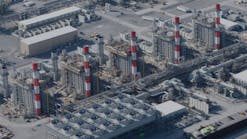Microbial enhanced oil recovery (MEOR) projects carried out during the last 10 years provide a basis for characterizing the types of reservoirs suitable for MEOR applications.
This concluding part in a two-part series describes 10 field cases involving 221 producing wells in Malaysia, the US, Argentina, and China. The first part (OGJ, Aug. 17, 2009, p. 39) discussed the ways microbes can enhance oil recovery.
Of the 10 field cases discussed, most are in China.
Malaysia
Offshore Malaysia, Bokor field received MEOR treatments.1 The producing reservoir in the field has good 50-4,000 md permeability and produces viscous oil (see table below).
The operator injected bacteria solution into three production wells and then shut them in for 5 weeks.
After production resumed, oil production in one well increased to 1,500 b/d from 600 b/d before the treatment. Water cut from this well declined to 45% from 75% before the treatment.
The effects, however, only lasted 2 weeks, and the other two treated wells showed no significant response.
US
Operators in the US have reported very few MEOR field cases in the past 10 years, possibly because they have been reluctant to reveal their production data.
In one reported project in Alabama, the operator injected only nutrient (mixture of molasses, KNO3, and NaH2PO4) into the target reservoirs to feed indigenous microbes.2
The producing formation was the Carter sandstone at a 2,300-ft deep. The producing area had 20 injectors and 32 producers, producing 290 bo/d, 60 Mscfd of gas, and 3,100 bw/d of water. The operator injected nutrient into only four of the injectors.
By yearend 1996, 8 of the 15 connected production wells showed a positive response.
Carbon number analysis indicated the wells produced extra oil from previously unswept reservoirs, which indicates selective plugging as the EOR mechanism.
The field recovered 69,000 bbl of extra oil because of the microbial treatments.
Argentina
Argentina MEOR operations include huff-and-puff projects in Piedras Coloradas field.3 Receiving the bacteria treatments were two wells in Barrancas formation and four wells in Blanco formation.
The Barrancas formation has a 120-md permeability and 170° F. temperature, while the Blanco formation has a 5-10 md permeability and 180° F. temperature.
The operator injected bacteria solution in the 6 producers, followed by a 72-hr shut-in.
The treatment increased oil production rates (Fig. 1), decreased water cut, and decreased crude viscosity.
The estimated cost per incremental barrel was $5.10.
Another Argentina MEOR was a bacteria flood of the Papagayos reservoir in Vizcacheras field.4 The top of reservoir is at 1,850 m. The reservoir has a 1-darcy permeability, 1,400-psia pressure, and 198° F. temperature.
Before MEOR, the Papagayos reservoir was waterflooded. The production had a high 96% water cut.
Nine producing wells had a positive response from the bacteria solution injected in an injection well.
Fig. 2 shows an example from one of the wells in which oil rate increased and water rate decreased.
In addition, crude oil viscosity decreased after the microbial treatment. For well VI-50, crude viscosity decreased to 50 cp from 115 cp before MEOR.
From August 2000 to August 2003, MEOR extracted an additional 37,000 bbl from the reservoirs.
The estimated cost per incremental barrel was $2.90.
China, Changqing
Several Chinese oil companies also have implemented MEOR projects.
The Maling block in Changqing oil field was one of the fields with MEOR field tests.5
Laboratory tests had shown that bacteria could lower oil viscosity, paraffin content, and pour point. The selected block has low 2-149 md permeability, medium 43-54° C. temperature, and high salinity, up to 104,400 mg/l.
The operator treated 32 wells with bacteria. Each well treatment consisted of 24 cu m of microbe-laden fluid, displaced by clean water. Water cuts and fluid production remained almost unchanged after microbial treatments, while oil production increased by 18%, especially for wells with high permeability.
The project recovered an estimated 2,500 tons of extra oil because of MEOR technology.
China, Shengli
Another MEOR project was Shengli oil field. This project only included the injection of nutrient for activating indigenous bacteria.
The Shan 12 block of Sinopec's Shengli oil field has relatively low 89-263 md permeability and medium 66° C. temperature.
Injection of nutrition started in August 2004.6
After the wells took nutrition, injection pressure climbed to 10 MPa from 2 MPa. Three producers showed increase in fluid output. Oil production increased to 23.8 tons/day from 8.9 tons/day before the treatment. Water cut declined to 80% from 92%.
The cumulative incremental oil production reached 2,700 tons.
The increase in injection pressure indicated that injected water had started to sweep low-permeability zones.
Another Shengli MEOR project was a microbial flood in the Wenmingzhai block.7
The formation has a high 85° C. temperature and a high 123,000 mg/l. salinity.
The operator injected bacteria into 12 injection wells. Among the 29 producers, 25 wells increased production.
Fluid production from the wells increased to 1,145 cu m from 1,102 cu m before treatment. Oil production increased to 146 tons from 108, and water cut decreased to 80% from 83%. The treatment was effective for 180 days.
For injection well M159, the bacteria treatment greatly altered the injection profile. Before the treatment, the zone at 1,544-1,550 m took more than 70% of injected water. After bacteria treatment, the same zone took less than 5% of the injected water and several new zones began taking the water (Fig. 3).
This indicates that selective plugging played an important role in improving production.
China, Dagang
Dagang oil field is another field in China with an MEOR project. The work isolated three strains in the Guan 69 block of Dagang oil field. The strains were arthrobacter, pseudomonas, and bacillus species.8
The two producing formations have 468 and 259-md permeability and a 73° C. temperature. The produced crude had high, about 28%, paraffin content and high, about 24%, asphaltene content.
The formation water salinity was 16,790 mg/l.
Before the bacteria treatments, the reservoir had produced 22.6% of original oil in place and water cut had reached 94.5%.
The project involved injecting nutrient for 3 days followed by bacteria solution injection and a 10-day shut-in. After the shut-in, the wells received nutrient again for 21 days.
After production resumed, the operator observed a decrease in interfacial tension, lower crude viscosity, and fewer heavy components in the crude. The project successfully controlled the decline in oil rate (Fig. 4).
By the end of July 2004, all seven production wells showed positive responses to microbial treatments, and the project had recovered about 8,700 tons of additional oil.
China, Daqing
The Daqing oil field from 2002 to 2005 had a huff-and-puff project and microbial flooding project in the Chaoyanggou block. The project injected bacillus cereus and brevibacillus brevis bacteria.20
The formation has a low 55° C. temperature and low 2-30 md permeability. The treatments, conducted in 60 wells, showed significant oil production rate increases in 43 wells.
The project divided the wells into three categories based on reservoir permeability. Among the 28 wells in the Class I reservoir with permeability higher than 15 md, 22 wells increased oil production.
Among the 22 Type II wells with reservoir permeability from 5 to 15 md, 15 wells increased oil production.
Of the 10 Type III wells with reservoir permeability less than 5 md, 6 wells showed a positive response.
The cumulative incremental oil production was 9,175 tons.
Fig. 5 charts a well's production history in which liquid output and oil production increased after bacterial treatment.
For another huff-and-puff project in the nearby Pubei block, 8 out of 10 wells increased fluid and oil production while water cut decreased.9
Fig. 5 also shows the production history of well 7P-2.
The cumulative incremental oil production was 1,873 tons. The block has a low 50° C. temperature and low 103-md permeability.
The success of the Pubei block huff-and-puff project led to bacteria flooding of the Chao-50 unit in Chaoyanggou field.9 The project involved 2 injectors and 10 producers.
Seven of the 10 producers had a positive response. The oil production for the unit increased to 700 tons/month from 300 tons/month (Fig. 5). Water cut decreased to about 40 from 47%. The effect of treatment lasted 3 years.
On the other hand, the wells' injection pressures started to decline after bacteria treatment. This indicated the lowering of interfacial tension and oil viscosity were the mechanisms for enhancing production. Moreover, previous laboratory tests also proved that bacteria treatments lowered interfacial tension and oil viscosity reductions under the reservoir conditions.
China, Fuyu
Fuyu field had both huff-and-puff and microbial flooding projects.10 The target reservoir was shallow sandstone with a low 30° C. temperature and relatively low 240-md permeability.
Before bacteria treatment, most wells had high, more than 90%, water cuts.
The first attempt injected 10% molasses solution into the reservoir to stimulate the indigenous bacteria. The operator, however, did not observe an increase in oil production, indicating that the favorable bacteria for MEOR could not compete with other species under sole nutrition injection.
The second attempt screened the indigenous bacteria from reservoir rocks to determine the strain that could produce insoluble polymer. The screening identified a strain of CJF-002 as a promising microbe for field trial. Based on rDNA sequences, CJF-002 belonged to 13 enterobacter species.
The operator tested the huff-and-puff method with CJF-002 strain in six producing wells. After a shut-in of 10 days, four of six wells showed significant increases in oil production rate (Fig. 10). Moreover, tests detected high concentration of CJF-002 in the produced fluid, indicating that the selected strain was prospering in the target reservoir.
A third attempt applied bacteria flooding to 2 injection wells connected to 10 production wells. The attempt injected a strain of CJF-002 for 2 weeks, followed by a 1-week injection of 0.1% molasses solution. In addition, injected was 1, 5, and 20% molasses solutions subsequent to bacteria injection. Waterflooding resumed after the injections.
Produced water analysis, however, showed the concentration of CJF-002 was much lower than other species. Moreover, the operator did not observed an increase in oil production.
This pilot test concluded that the project should have a higher concentration of CJF-002 injected to establish predominance and use a relatively high molasses concentration, higher than 5%.
The fourth attempt modified the injection. The attempt injected the strain and nutrient simultaneously with an increased 10% molasses concentration. Injection of the CFJ-002 lasted for 1 week to maximize its dominance.
As a result, the oil production doubled for more than 1 year after bacteria flooding (Fig. 6). Total water cut decreased to 65% from 88% and incremental oil recovery reached 3,392 tons.
The long-term effect of bacteria treatment indicated that the strain generated insoluble polymers to seal the high-permeability channels.
The microbial treatment also shifted the crude carbon number (Fig. 6). The produced oil became lighter than before, which indicated that the produced oil was from a previously unswept zone.
Analysis
Most microorganisms cannot survive high temperatures. It is thus believed that temperature has the most significant effect on the success of MEOR applications. In the table, of the total of 221 producers treated with bacteria, about 76% have reservoir temperatures below 55° C. (Fig. 7).
For the cases summarized in the table, two projects (30 producers) did not report the number of wells with positive responses.
A total of 119 of the 191 producers treated with 15 bacteria reported positive responses, which is a 62% overall success rate.
Fig. 7 also gives the relationship between temperature and wells with positive responses. About 60% of the wells with positive responses have temperatures below 55° C., and almost all successful cases had temperatures below 85° C.
Based on the field data, one should apply MEOR methods to formations under 85° C., preferably below 55° C.
Bacteria also are sensitive to water salinity. Formation water generally has high salinity. Unfortunately, most of the field cases reviewed did not report water salinity.
Based on limited information, salinity less than 100,000 ppm seems a reasonable criterion.
The permeabilities in the treated reservoirs range from less than 1 md to 4,000 md, so that the success of MEOR projects does not seem to depend on reservoir permeabilities.
The treated wells often had high, more the 75%, water cuts and low producing rates.
Another important consideration is the mechanisms contributing to a success MEOR applications. Some field cases reported reductions in interfacial tension, which indicates generation of biosurfactant by microbes. Moreover, some cases reported an increase in injection pressure and alteration of injection profile. This indicates some formations' plugging and injected water entering a new interval.
No field case reported a significant increase in gas production. Gas production, therefore, is unlikely a major contributor to enhanced oil recovery.
Another proposed MEOR mechanism is wettability change. Core measurements in the laboratory are the bases of wettability values. These measurements are taken normally in the early stage of field development. Wettability change, therefore, is almost impossible to monitor or verify after the field is on production.
The dominant MEOR mechanisms may be interfacial tension reduction and selective plugging. As stated in Part 1 of this series, most interfacial tension measurements in the reservoir with biosurfactant were above 1 mN/m. This value is not low enough to mobilize residual oil, and the biosurfactants in reservoirs are much more diluted than in the laboratory. The effectiveness of interfacial tension reduction is, therefore, limited.
Porous rock contains large pores (pore bodies) and small pores (pore throats). Pore throats often have sizes in the micron range. The microbes for MEOR often are about 1 µm in size.
While flowing in porous rock, pore throats can easily capture the microbes. After the bacteria plugs the small pores, injected water may divert to new intervals. This can explain the changes in oil properties and the water injection profile.
The reduction in interfacial tension may not be less effective than selective plugging in improving recovery.
References
- Karim, M., et al., "Microbial enhanced oil recovery technology in Bokor field Sarawak," Paper No. SPE 72125, SPE Asia Pacific Improved Oil Recovery Conference, Kuala Lumpur, Oct. 6-9, 2001.
- Brown, L., et al., "Slowing production decline and extending the economic life of an oil field: new MEOR technology," SPE Reservoir Evaluation and Engineering, February 2002, pp. 33-41.
- Maure, M.A., et al., "Microbial enhanced oil recovery pilot test in Piedras Coloradas field Argentina," Paper No. SPE 53715, SPE Latin America and Caribbean Petroleum Engineering Conference, Caracas, Apr. 21-23, 1999.
- Strappa, L.A., et al., "A novel and successful MEOR pilot project in a strong water-drive reservoir," Paper No. SPE 89456, SPE/DOE 14th Symposium on Improved Oil Recovery, Tulsa, Apr. 17-21, 2004.
- Deng, D., "Systematic extensive laboratory studies of microbial EOR mechanisms and microbial EOR application results in Changqing oil field," Paper No. SPE 54380, SPE Asia-Pacific Improved Oil Recovery Conference, Jakarta, Apr. 20-22, 1999.
- Wang, L., et al., "Indigenous MEOR in Shan 12 Block,". Petroleum Geology and Recovery Factor, (in Chinese), Vol., 13, No., 3, 2006, pp. 82-84.
- Zhao, H., et al., "Field pilot of microbial flooding in high temperature and high salt reservoirs," Paper No., SPE 95360, SPE ATCE, Oct. 9-13, 2005.
- Liu, J., et al., "The field pilot of microbial enhanced oil recovery in a high temperature petroleum reservoir," Journal of Petroleum Science and Engineering, Vol. 48, 2005, pp. 265-71.
- Hou, Z., et al., "The application of hydrocarbon degrading bacteria in Daqing's low permeability, high paraffin content oilfields," Paper No. SPE 114344, SPE/DOE Improved Oil Recovery Symposium, Tulsa, Apr. 20-23, 2008.
- Fujiwara, K., et al., "Biotechnological approach for development of microbial enhanced oil recovery technique," Studies in Surface Science and Catalysis 151, Vazquez-Duhalt, R., and Quintero-Ramirez, R., editors. Chapter 15, 2004, pp. 405-45.




